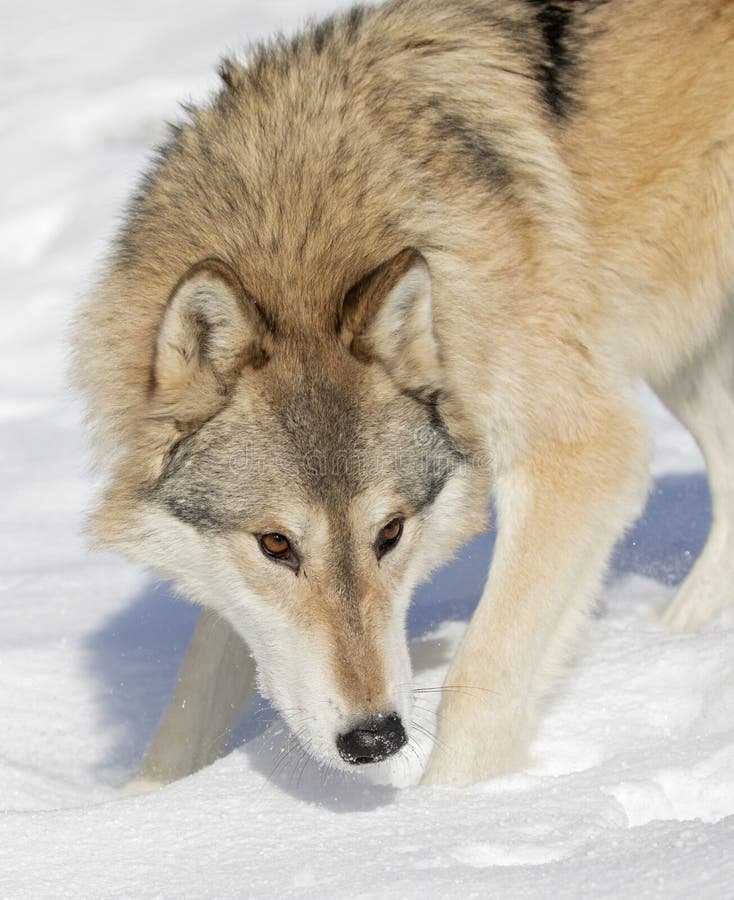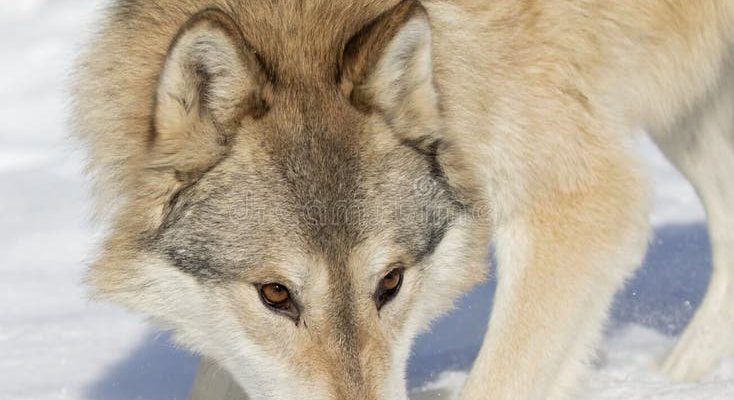
Honestly, it’s a bit like playing a game of telephone. One person hears something, and by the time it reaches you, it’s morphed into something entirely different. So, what’s the real deal with tundra wolves? Let’s clear up some of the most common misunderstandings that people have about these fascinating animals.
Myth 1: Tundra Wolves Are Just Like Any Other Wolf
You might think that a wolf is a wolf, right? Well, here’s the thing: tundra wolves are quite unique. They’re a specific subspecies adapted to survive in their harsh, cold environment. Unlike their cousins in more temperate regions, tundra wolves have thicker fur, larger bodies, and broader paws, which help them navigate their icy home.
Adaptations are key to their survival. For example, their thick fur not only keeps them warm but also traps air, giving them added insulation. You can think of it like a winter coat with an extra layer of warmth built in. Their body size is also important; larger animals tend to retain heat better.
Moreover, tundra wolves have a unique social structure. They often live in smaller packs compared to other wolf species, which helps them manage their resources better in the sparse tundra landscape. When it comes to hunting, they’re strategic—they rely on teamwork to take down prey, which can be as hefty as a caribou!
Myth 2: Tundra Wolves Hunt Alone
You might picture a lone wolf prowling silently through the snow, but tundra wolves often hunt in packs. This teamwork is essential for their survival. Given the vastness of the tundra, finding food can be a real challenge. By working together, they can cover more ground and coordinate their efforts to hunt larger prey.
Pack dynamics play a big role here. A pack can range from just a few wolves to ten or more. Each member has specific roles during a hunt, much like a well-rehearsed play. Some wolves may flank the prey, while others drive it toward the waiting jaws of their comrades. It’s fascinating to watch; you might even say their hunting strategy is like a game of chess on ice!
You might be wondering what happens if a wolf gets separated from the pack. Well, they can struggle to survive alone. Wolves are social animals, and their success often relies on the strength of their bond with their pack.
Myth 3: Tundra Wolves Are Instinctively Aggressive
When we think of wolves, we often imagine fierce predators with a bad reputation. But tundra wolves, like all wolves, have a complex set of behaviors. Yes, they are hunters, but aggression isn’t their default. Their first instinct is often to avoid conflict.
Social structure plays a significant part in this. Tundra wolves communicate extensively through body language, vocalizations, and even facial expressions. They use these signals to maintain harmony within the pack and avoid unnecessary fights. When conflicts do arise, wolves often choose to resolve them without violence, utilizing submission or retreat as an option.
It’s also crucial to remember that tundra wolves are not a direct threat to humans. They tend to shy away from us, mostly because we’re not their prey. While they are powerful and capable hunters, they would rather avoid us than confront us.
Myth 4: Tundra Wolves Are Endangered
You might think that with their remote habitats and the harsh conditions they endure, tundra wolves are on the brink of extinction. However, that’s not quite the case. While certain populations may face threats from habitat loss and climate change, tundra wolves as a species are currently not classified as endangered.
Conservation efforts have worked to keep their population stable, especially in areas where they face human encroachment. In fact, in some regions, conservationists are focusing on maintaining healthy habitats to ensure that these magnificent creatures can thrive.
That said, environmental changes like global warming do pose significant challenges. As the tundra changes, so do the dynamics of their prey, which affects the wolves’ food sources. Understanding these challenges gives us insight into the importance of continued conservation efforts.
Myth 5: Tundra Wolves Have Only One Habitat
Many people think tundra wolves are limited to the classic, cold tundra landscapes. While it’s true these wolves thrive in such environments, their range is broader than that. They can adapt to various cold habitats, including boreal forests and even parts of the taiga.
Habitat flexibility allows them to survive in different conditions. For instance, they might move from the open tundra to forested areas in search of food or shelter. Their adaptability is one of the many reasons they have survived for so long, even in changing climates.
Understanding their habitat also sheds light on their prey. In some regions, they hunt smaller animals when larger prey is scarce. This adaptability serves them well, showcasing just how resilient these wolves can be!
Myth 6: Tundra Wolves Are Nocturnal
You might have heard that wolves are mainly active at night, but this isn’t entirely true for tundra wolves. While they can be out at night, they are crepuscular, meaning they are primarily active during dawn and dusk. This behavior helps them avoid the harsh midday sun and take advantage of the cooler temperatures.
Timing their hunts is strategically beneficial, too. Many of their prey are also more active during these hours, making it easier for them to find food. Plus, the low light conditions provide perfect cover for stalking.
This crepuscular behavior also speaks to how they’ve adapted to their environment. The tundra is vast, and being carefully timed helps them minimize risk while maximizing their hunting opportunities.
As we’ve explored, there are plenty of myths surrounding the tundra wolf. From their hunting habits to their social structures, these wolves are much more complex than common stereotypes suggest. Understanding the truth about tundra wolves enriches our appreciation for these incredible animals and helps foster greater respect for their role in the ecosystem.
So, the next time someone brings up tundra wolves, you can share what you know! Debunking myths helps us all appreciate the wonders of nature a little more. The tundra wolf is not just a creature of the cold; it’s a testament to resilience and adaptability in the wild. Let’s keep the conversation going and continue learning about these extraordinary animals!

